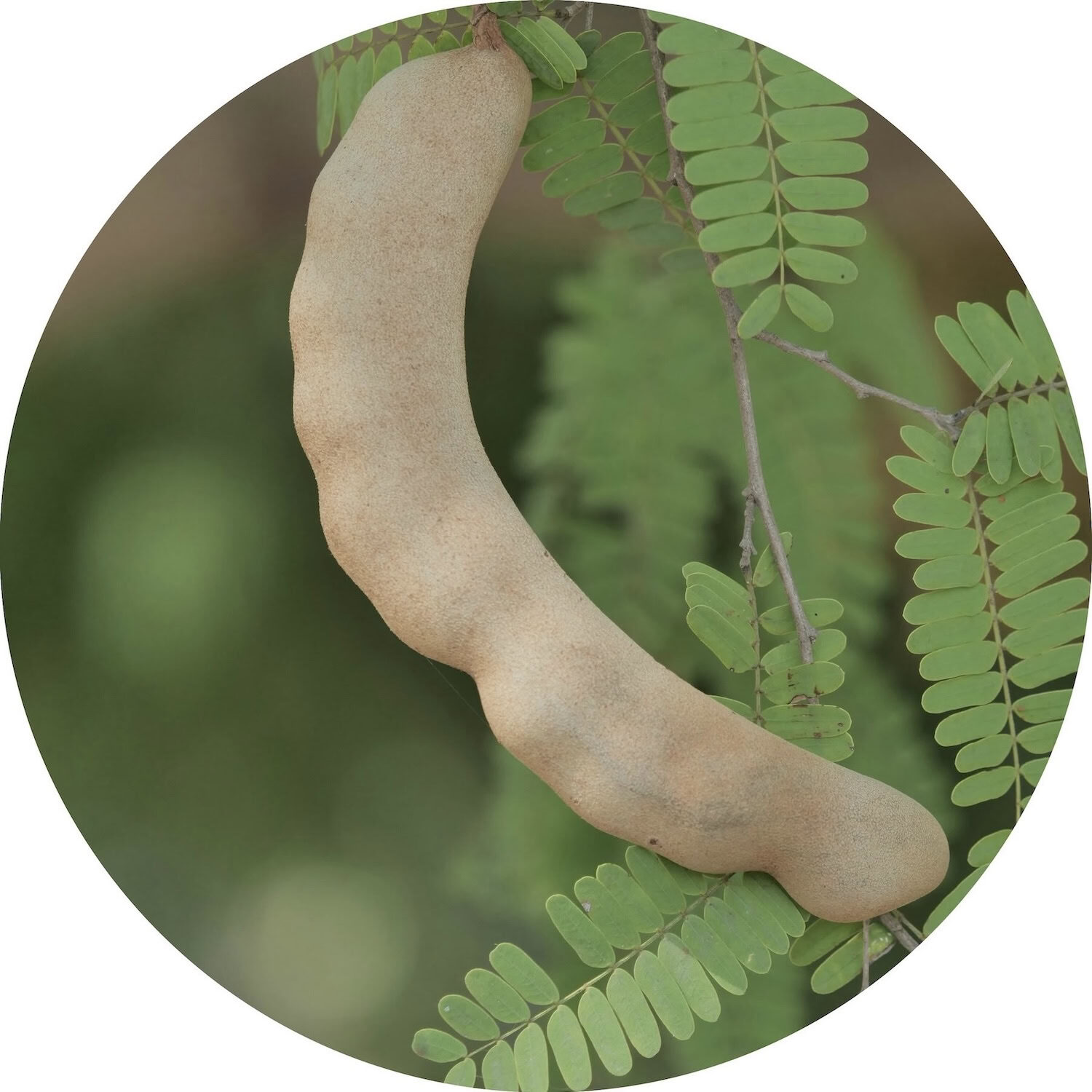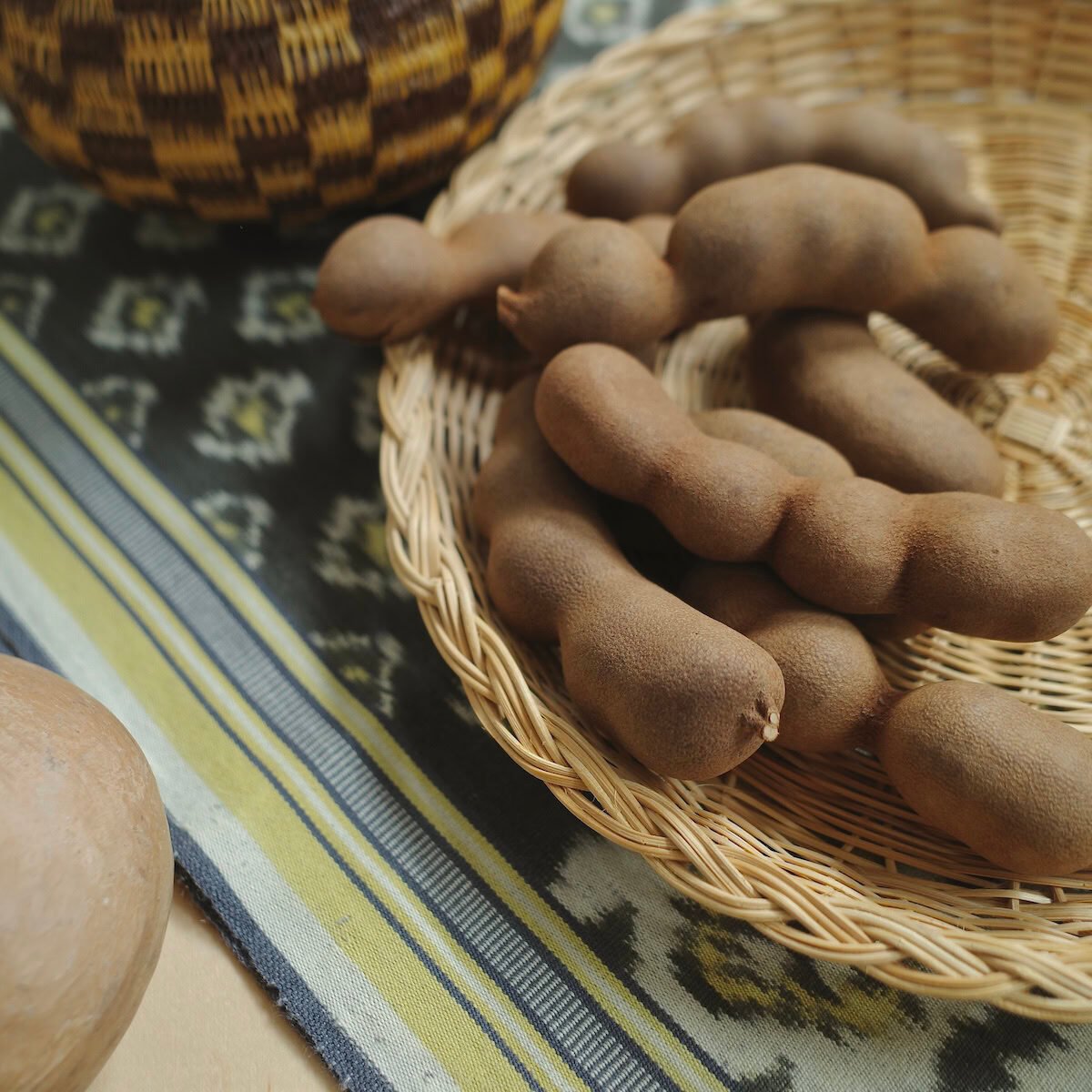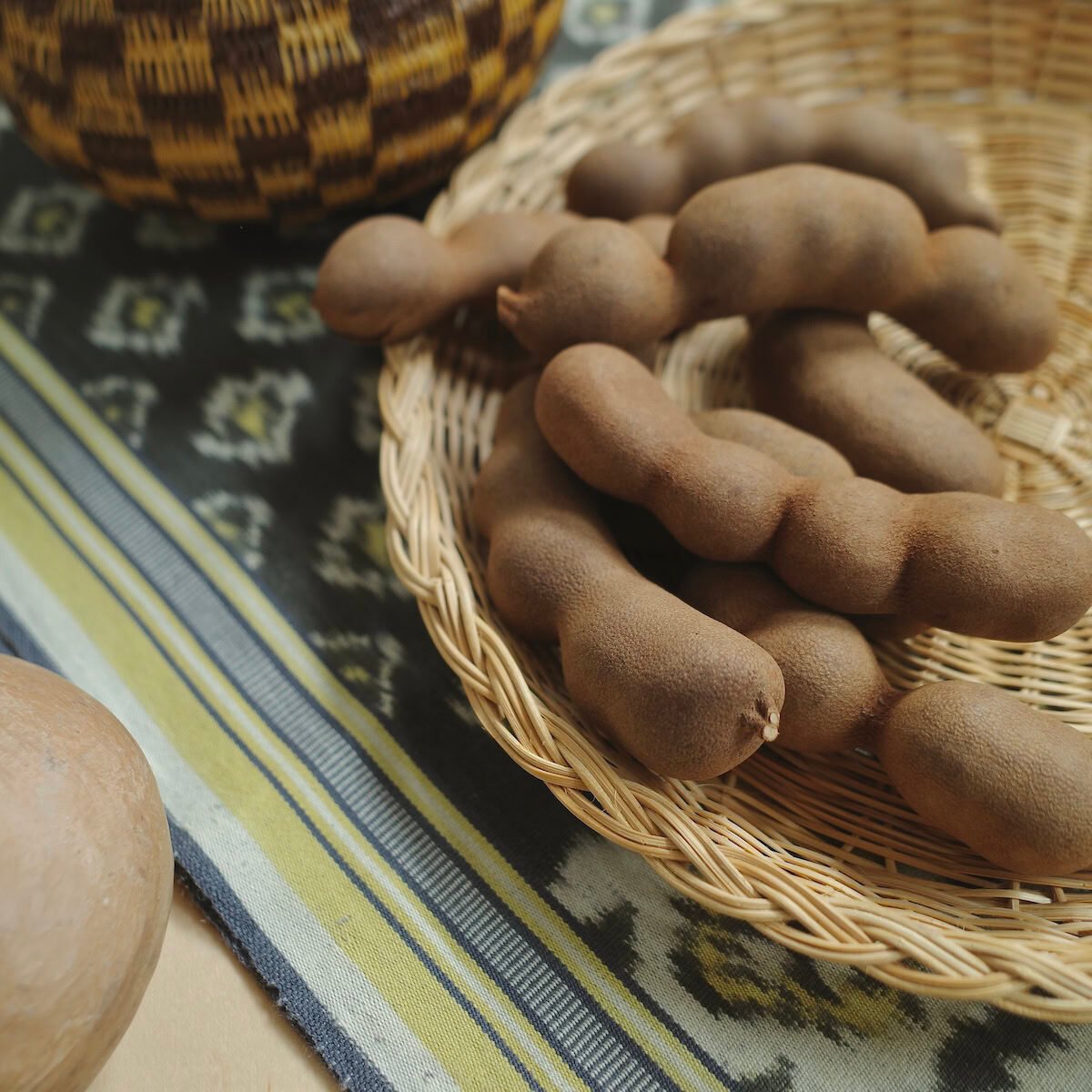Tamarind
Tamarind is the spice produced from the pulp of the fruit pods of Tamarindus indica, a long-lived tropical evergreen tree in the legume family.

REGION OF ORIGIN
Tropical East Africa. Despite tamarind growing wild in India as if it were born there, genetic and historical evidence points to the plant originating in the savanna plains of East Africa, including parts of present-day Sudan, Ethiopia, Kenya, and Tanzania. This region's warm climates and rich biodiversity was the perfect environment for the tamarind tree to evolve.
PART & COLOR
Fresh tamarind pulp surrounds the seeds within the fruit pods. It is a rich, reddish brown color. The spice can also take the form of a compressed block of dehydrated pulp paste, which is an even darker shade.
HARVEST
Tamarind is one of the most widely cultivated tropical fruit trees, so its harvest season differs significantly based on region, climate, and the desired qualities of the fruit. As an example, the typical harvest season in India, the world's largest producer, is between late February to mid-April. Post-harvest, pods are sold whole or depulped. This process is often done painstakingly by hand to separate the sticky pulp.

FLAVOR & AROMA PROFILE
Tamarind offers a symphony of flavors, its ripe pulp a unique balance of sweet, sour, tart, and tangy. The underlying sweetness often carries hints of dried fruit like dates and apricots, while a subtle, bright citrus element adds freshness. Floral undertones complete tamarind's captivating profile.
The intensity of each of these features varies based on the ripeness of the fruit and the variety, of which there are many. Selective breeding has led to diverse tamarind cultivars, offering a range of flavors from tart and sour to exquisitely sweet. When the pulp is dried, these core flavors remain, although the process concentrates the sweet, sour, and tangy flavors while reducing the more delicate floral notes.
CULINARY USES
Tamarind's culinary uses are wide-ranging, reflecting its global cultivation and long history. Its unique sweet-sour flavor benefits both the sweet and the savory. From Latin American aguas frescas and Caribbean marinades to Indian chutneys and the famous pad Thai, tamarind is essential to many beloved beverages and dishes from around the world. It's also a key ingredient in Worcestershire sauce.
The pulp, often rehydrated from its dried, compressed form, provides a tangy base for sauces, adds complexity to curries, and contributes a bright note to desserts. While the pulp is the star, tamarind seeds also have a niche culinary application as a thickening powder if they are properly ground.



